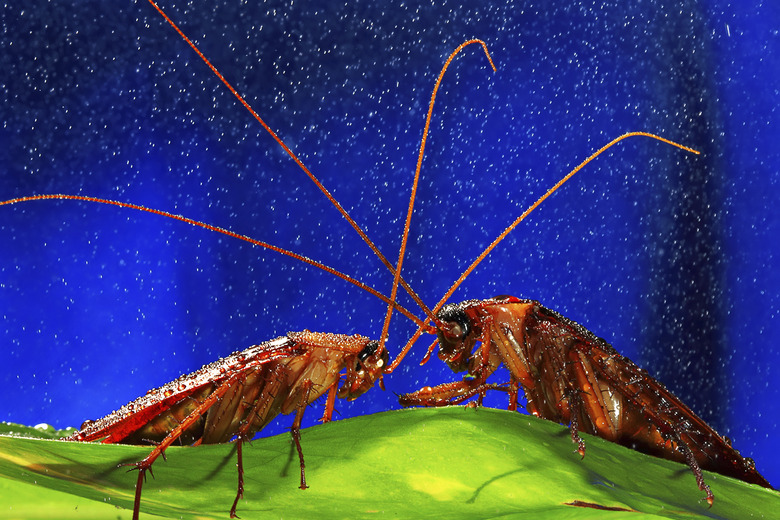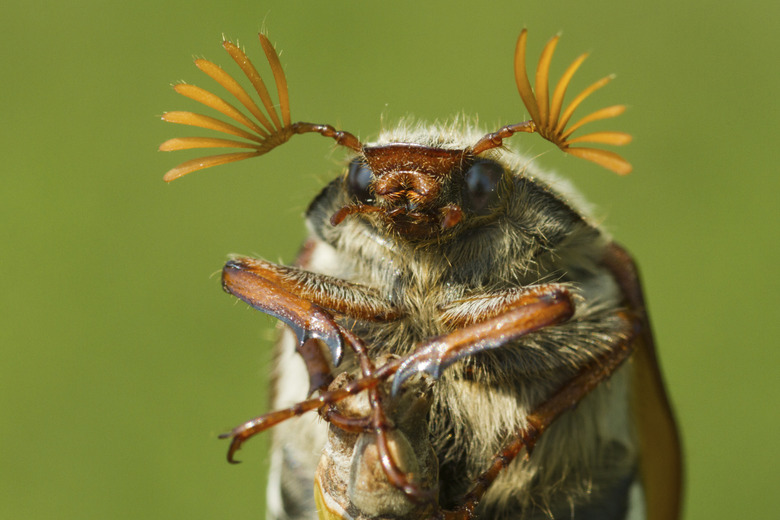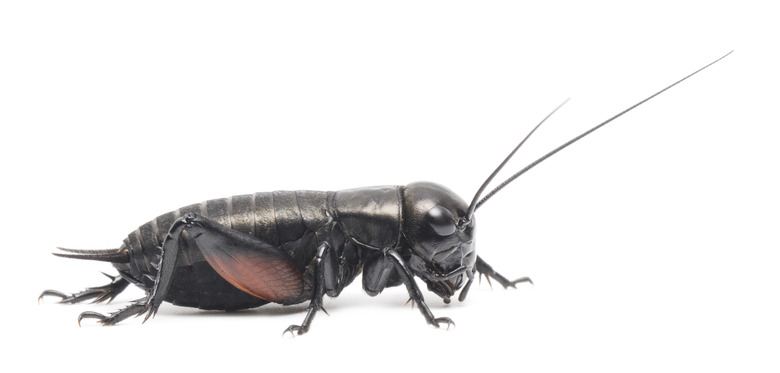Bugs & Insects That Look Like Cockroaches
TL;DR (Too Long; Didn't Read)
Those who hate cockroaches may shudder to hear that there are more than 3,500 roach species in the world. Only four species are prominent in the U.S.: German, Oriental, American and brown banded.
Warning
If the bug is living in your kitchen cabinets or bathroom, it is likely a cockroach. The lookalike bugs only get into the house by accident and will try to get out as soon as possible. Cockroaches can trigger allergies, especially in children.
Name a species that has been on earth for 350 million years, creatures that can go two months without food and zip along at a speed of 50 body lengths per second. The remarkable critter is the cockroach, but that doesn't make it more welcome in your house or backyard. If you think you see these pests in your garden, look closely before you panic because a variety of other bugs share some cockroach features.
Cockroaches, Amazing and Dangerous
Cockroaches, Amazing and Dangerous
Resilient and tenacious, cockroaches are termed the ultimate survivors. Perhaps you've read that they have been voted the most likely to survive a nuclear war. Even cockroaches that have been decapitated survive for weeks. Still, you don't want them in your house, as they carry carry pathogens that can make you sick, destroy paper products and trigger allergies and asthma. But not every bug that looks like a cockroach is in fact a cockroach.
Giant Water Bugs
Giant Water Bugs
If you are hoping that cockroach lookalikes in the garden are less dangerous, think again. Giant water bugs look something like large cockroaches but, unlike roaches, they can give you a painful bite if you invade their space. Cockroaches like humidity but not water, while giant water bugs spend most of their time in fresh water, and any standing water in your yard might attract them. Water bugs eat fresh food, like tadpoles or small fish, while cockroaches eat anything, including rotting material.
May/June Bugs
May/June Bugs
Whether they call these creatures May beetles or June bugs in your part of the country, you might mistake the large flying insect for a roach if you only get a passing glance. Approximately the same size — 1/2 to 1 inch — and color — brown/black — as a cockroach, the June bug is vegetarian, feeding almost exclusively on tree leaves. Although the trees may look tattered by this munching, you don't need to do anything to control the bugs. You can also distinguish some species of these insects by their multiforked antennae that look like eyelashes.
Ground Beetles
Ground Beetles
With more than 2,000 species of ground beetle, no one description fits all, but generally these insects are look something like roaches, and their bodies are often dark and shiny. But it is critical to tell the difference because ground beetles are beneficial insects in the garden, eating maggots, snails and other soft-bodied pests including gypsy moth larvae. One distinguishing factor is the beetle's hardened front wings. Cockroaches often are wingless, but if they have wings, they are leathery, not hard.
Chirping Crickets
Chirping Crickets
Crickets resemble cockroaches a little, six-legged crawlers with antennae about the same length as the brown or black bodies. A little sleuthing reveals their true identity. Crickets live outdoors, eat plant matter and "sing" on summer nights. They also are beneficial insects in the garden, breaking down plant matter and providing food for hungry birds, reptiles and mammals.
References
- County of Santa Barbara: Cockroaches
- PestKill: Best Ways of Effective Water Bug and Roach Identification
- Combat: Bugs That Look Like Cockroaches
- Combat: Cockroach Identification
- New York State IPM: How to Protect You and Your Family From Bed Bugs
- University of Arizona Center for Insect Science Education Outreach : Cricket Information
- University of Kentucky Entomology: Ground Beetles
- University of Minnesota Extension: Cockroaches
- Scientific American: Fact or Fiction? A Cockroach Can Live Without Its Head
- Ohio State University: May/June Beetle
Cite This Article
MLA
Miller, Renee. "Bugs & Insects That Look Like Cockroaches" sciencing.com, https://www.sciencing.com/bugs-insects-that-look-like-cockroaches-13405790/. 21 July 2017.
APA
Miller, Renee. (2017, July 21). Bugs & Insects That Look Like Cockroaches. sciencing.com. Retrieved from https://www.sciencing.com/bugs-insects-that-look-like-cockroaches-13405790/
Chicago
Miller, Renee. Bugs & Insects That Look Like Cockroaches last modified March 24, 2022. https://www.sciencing.com/bugs-insects-that-look-like-cockroaches-13405790/





